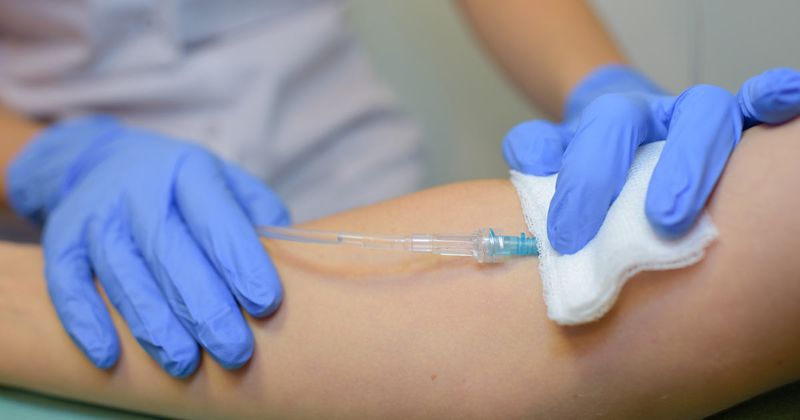Typical care resolves respiratory symptoms that come with immune checkpoint inhibitors
Key takeaways:
- Peripheral eosinophilia followed immune checkpoint treatment in six patients.
- Symptoms included cough, shortness of breath and dyspnea.
- Symptoms improved with controller therapies and rescue inhalers.
BOSTON — Patients with eosinophilic reactive airway disease after immune checkpoint inhibitor therapy saw improved symptoms with typical treatment for reactive airway disease, according to a study presented at the CHEST Annual Meeting.
As antibodies, immune checkpoint inhibitors (ICIs) block immune regulation signals so T cells can mount more effective cancer responses, Parker Cordial, MD, resident, The Ohio State University College of Medicine, and colleagues wrote.

“More than 43% of patients with cancer are eligible for ICI therapy,” Cordial said during his presentation.

Also known as ICI-related pneumonitis, noninfectious inflammation of the lung may occur as part of the increased immunologic activity and autoimmune-mediated organ inflammation that follows ICI treatment.
Guidelines recommend permanent discontinuation of ICIs or immune suppression with systemic corticosteroids to treat ICI-related pneumonitis, based on radiographic involvement and clinical severity.
However, the researchers noted that there is no clear diagnosis and treatment for ICI-related airway disease that does not have any parenchymal involvement.
“While some toxicities like ICI-related pneumonitis are very well defined and well described in the literature, other pulmonary toxicities including reactive airways disease are scarcely described,” Cordial said.
“A better understanding of these toxicities can improve early diagnosis, enhance treatment and sometimes allow for continuation of the cancer-directed ICI therapy,” he continued, “as opposed to the current paradigm, which when patients develop these symptoms, they have to discontinue the therapy and move to second-, third- or fourth-line agents for their cancer.”
Study design, results
The study included four men and two women aged 28 to 76 years (median age, 67 years) diagnosed with primary solid tumors who had no reactive airway disease or peripheral eosinophilia before developing peripheral eosinophilia following ICI treatment.
“They had to have no evidence of acute, parenchymal abnormalities or inflammation on their chest CT,” Cordial said. “Similarly, they had no prior diagnosis of COPD or asthma.”
The researchers defined peripheral eosinophilia as 500 cells per microliter or more in the peripheral blood. Patients also had new or worsening obstruction in their pulmonary function tests once ICI treatment began, defined as a ratio of FEV1 to forced vital capacity or single breath count of less than 0.7.
Two patients had lung adenocarcinoma. The other malignancies included esophageal adenocarcinoma, head and neck squamous cell carcinoma, appendiceal carcinoma and urothelial bladder carcinoma.
Patients received a range of one dose to 23 doses of PD-1 therapy before discontinuing treatment. Their peripheral eosinophilia had a median of 1,215 eosinophils/µL. Symptoms included cough, shortness of breath and dyspnea on exertion, which the researchers called consistent with reactive airway disease.
No parenchymal abnormalities were found in CT scans that were ordered to evaluate for pneumonitis, nor were there any alternative diagnoses that could explain their symptoms.
Treatment for the peripheral eosinophilia included controller therapies with inhaled corticosteroids and long-acting beta agonists, in addition to short-acting beta agonist rescue inhalers, which the researchers called established treatments for reactive airway disease.
“A few of the patients had symptoms that persisted despite the inhalers,” Cordial said.
There were four patients who needed systemic steroids, and one patient with refractory symptoms received dupilumab (Dupixent; Regeneron, Sanofi).
“With those treatments, all six of the patients in the study experienced symptomatic improvement,” Cordial said.
Also, two patients continued to receive ICI therapy thanks to their symptom control.
Conclusions, next steps
The researchers called this the first comprehensive case series to evaluate patients with eosinophilic reactive airway disease but no pre-existing lung disease after receiving ICI treatment, in addition to the first case series that described how eosinophil-targeted biologic therapy managed it.
Further, the researchers said that underdiagnosis and inadequate treatment may result when this underrecognized pulmonary immune-related adverse event is not recognized, with early diagnosis and management potentially enabling the continuation of cancer-directed immunotherapy.
“There’s an established link between ICI therapy and eosinophilia, and we feel it’s through this TH2 mediated pathway with the eosinophilia at play where the reactive airway disease might be occurring,” Cordial said, adding that the improvements experienced by the patient who used dupilumab support this hypothesis.
“The other factor that we feel is at play here is that PD-1 antagonism relieves airway hyper-reactivity,” Cordial said. “Each of these patients was treated with PD-1 antagonistic therapy, so we feel that the converse might be true, that it could lead to increased bronchospasm.”
The researchers called for additional study of the prevalence of peripheral eosinophilia following ICI treatment and of the effectiveness of various treatments.

